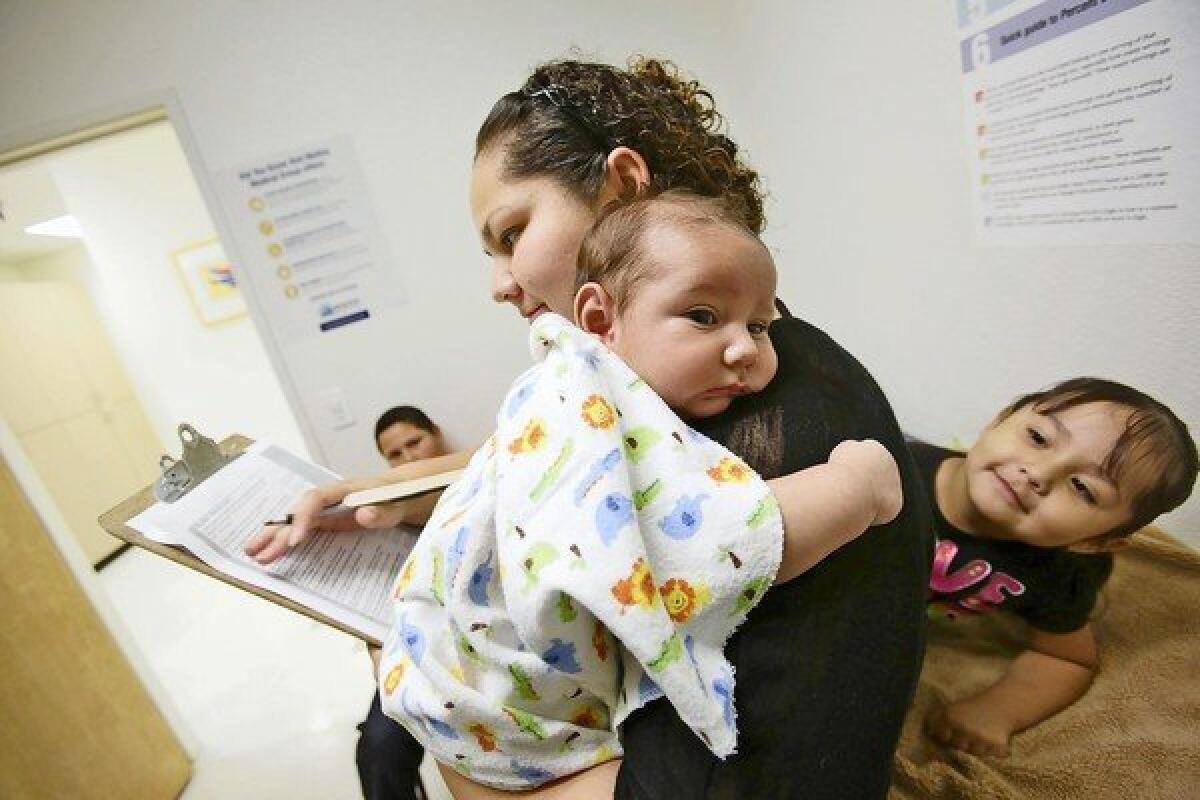What Gov. Arnold Schwarzenegger did right

The Obamacare rollout in California has been bumpy, but it’s running much more smoothly here than in most of America. And for that, we can thank former Gov. Arnold Schwarzenegger.
Gov. Jerry Brown deserves kudos, too. But it was Schwarzenegger who leapt in and became the nation’s first governor to embrace the federal Affordable Care Act and begin planning to implement the ambitious program.
“The Republican governor who preceded us jumped early and we accepted the baton that he tossed,” says Diana Dooley, Brown’s secretary of the Health and Human Services Agency. She also chairs the board for Covered California, the insurance exchange that operates Obamacare in the state.
Schwarzenegger gets blamed for many mess-ups and there’s no sense in reciting them here, except for one. That was his failed attempt to enact universal healthcare in California. But that failure has led to a relatively successful rollout of Obamacare in this state.
The champion bodybuilder and Hollywood action hero was always thinking big, searching for a “fantastic” program to enact. And in 2007, he embarked on a year-long crusade to create universal healthcare as a legacy.
Schwarzenegger borrowed from a program enacted in Massachusetts by then-Gov. Mitt Romney — the same Mitt Romney who, as the 2012 Republican presidential nominee, repeatedly attacked President Obama for his similar healthcare act.
Romney’s, Schwarzenegger’s and Obama’s plans all had two crucial similarities: They required practically everyone to buy health insurance — the “individual mandate” — and barred insurers from denying coverage to people with preexisting medical conditions.
Since then, the political dynamic has flipped on the individual mandate. It was originally proposed by conservatives who objected to people without insurance “freeloading” off premium buyers and taxpayers in hospital emergency rooms. But liberals objected to requiring poor people to buy plans they couldn’t afford from for-profit insurers.
Schwarzenegger had a tough time selling the individual mandate to Democratic legislators. But he struck an alliance with then-Assembly Speaker Fabian Nuñez (D-Los Angeles). And they finally won over lower house Democrats by providing government subsidies for the poor — similar to what Obama later did, inciting heated opposition from Republicans.
In the end, it didn’t matter in Sacramento. The economy was starting to tank. State government was falling into a $15-billion deficit crevasse while Schwarzenegger was proposing a $15-billion healthcare plan.
His proposal passed the Assembly but was killed in the Senate in early 2008. That house felt left out because it hadn’t been part of the negotiating, and besides, some key senators — particularly Sheila Kuehl (D-Santa Monica) — were holding out for a government-run “single-payer” system.
Fast forward two years, and Obamacare squeaks through Congress.
Schwarzenegger barely hesitated. The Republican governor hugged the Democratic president’s program and announced that California would create its own market exchange to implement it.
“The Republican Party was pushing him hard not to do it,” recalls Daniel Zingale, a Schwarzenegger advisor and an architect of his plan. “Republicans considered it the final insult. It was the red cape for the bull.”
Zingale, a self-described liberal and currently a senior official with California Endowment, an activist organization promoting more healthcare access, says, “The fact that Schwarzenegger signed the exchange bill was a big deal because Brown then could hit the ground running with that already in place.”
But “Jerry also deserves a lot of credit,” Zingale adds, for expanding Medi-Cal — California’s version of Medicaid for poor people — as part of Obamacare.
Kim Belshe, the Health and Human Services secretary under Schwarzenegger and a member of the Covered California board, says that “when the Affordable Care Act became law, California already had done the hard work on policy planning and building a supportive coalition. We’d worked with insurers, consumer groups and the business community. We were ready to move.”
Then Brown took office in January 2011, and told Dooley: “Don’t mess it up.” Or words to that effect that can’t be printed in the paper.
One crucial step, Dooley says, was balancing the state budget. Brown and the Legislature ultimately did it, with more spending cuts and the governor’s tax increase.
Without the budget-balancing, Dooley says, “It would have been very hard to go forward” with Obamacare. It’s costing the state about $200 million this budget year for Medi-Cal expansion. Next year, the price tag will be even higher.
Of course, the most important factor in making Obamacare work in California is that this is a blue state that actually wants it to — unlike politicians in red states who believe it’s OK to shut down the federal government, then gripe that the healthcare website is badly flawed.
California is one of 16 states that launched its own Obamacare website.
And it tried to keep things simple by limiting the insurers to a dozen. In states where scores of different plans are being offered, says Covered California Executive Director Peter Lee, “it’s a recipe for confusion.”
California’s website “is not perfect, but it works,” Lee says.
He won’t say how many people have been enrolled — that won’t be revealed until mid-November — but “it’s absolutely more than I had ever expected.”
Take a bow, Arnold.
.
More to Read
Sign up for Essential California
The most important California stories and recommendations in your inbox every morning.
You may occasionally receive promotional content from the Los Angeles Times.











